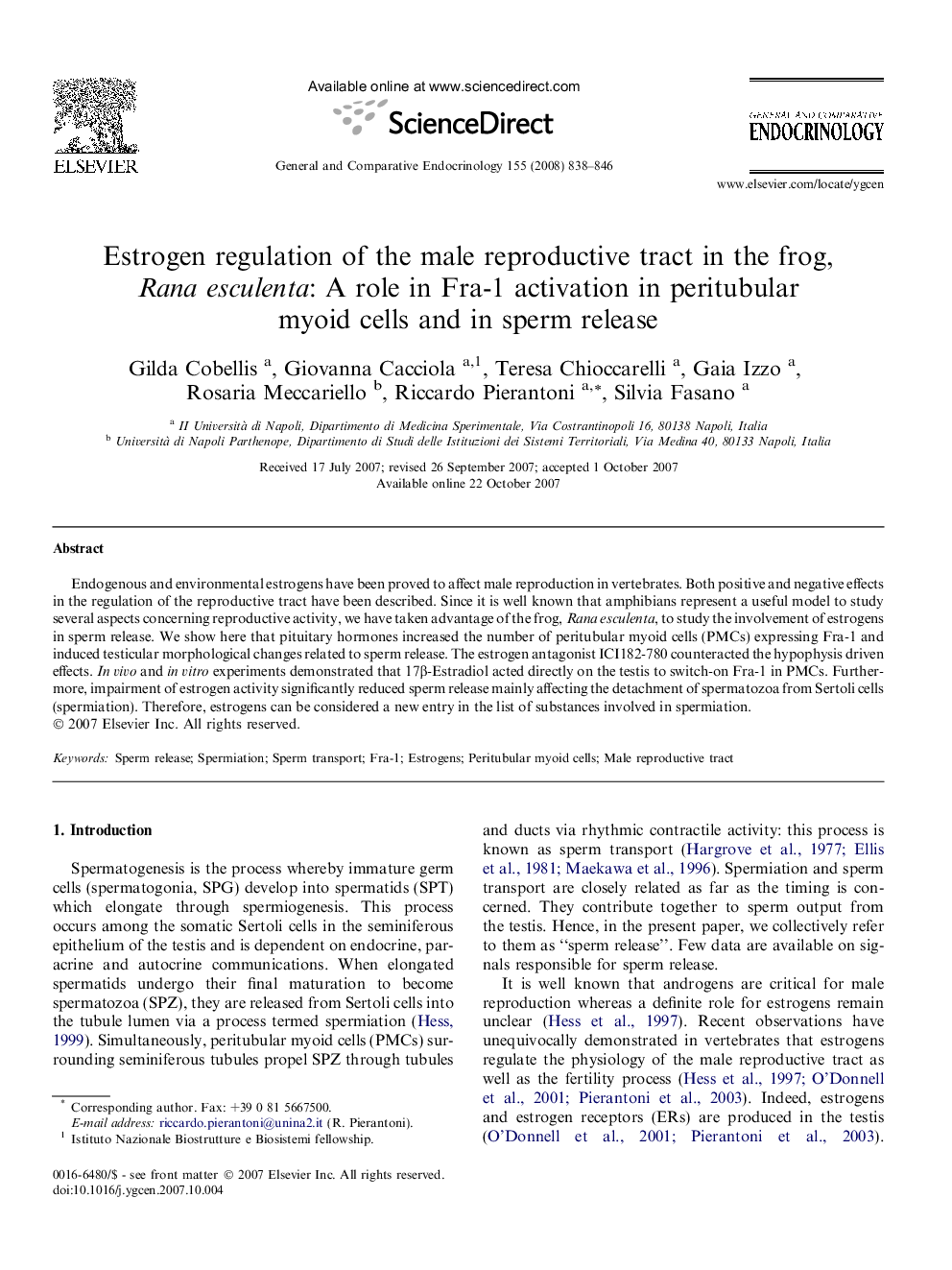| Article ID | Journal | Published Year | Pages | File Type |
|---|---|---|---|---|
| 2802070 | General and Comparative Endocrinology | 2008 | 9 Pages |
Abstract
Endogenous and environmental estrogens have been proved to affect male reproduction in vertebrates. Both positive and negative effects in the regulation of the reproductive tract have been described. Since it is well known that amphibians represent a useful model to study several aspects concerning reproductive activity, we have taken advantage of the frog, Rana esculenta, to study the involvement of estrogens in sperm release. We show here that pituitary hormones increased the number of peritubular myoid cells (PMCs) expressing Fra-1 and induced testicular morphological changes related to sperm release. The estrogen antagonist ICI182-780 counteracted the hypophysis driven effects. In vivo and in vitro experiments demonstrated that 17β-Estradiol acted directly on the testis to switch-on Fra-1 in PMCs. Furthermore, impairment of estrogen activity significantly reduced sperm release mainly affecting the detachment of spermatozoa from Sertoli cells (spermiation). Therefore, estrogens can be considered a new entry in the list of substances involved in spermiation.
Keywords
Related Topics
Life Sciences
Biochemistry, Genetics and Molecular Biology
Endocrinology
Authors
Gilda Cobellis, Giovanna Cacciola, Teresa Chioccarelli, Gaia Izzo, Rosaria Meccariello, Riccardo Pierantoni, Silvia Fasano,
